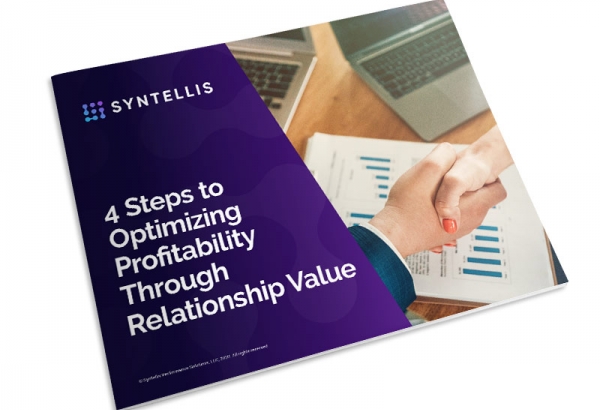(Part 1 of a 3-part blog series)
A few years ago, I met a gentleman in his office in North San Diego County to get some advice about a real estate deal. This gentleman, let’s call him David, owned commercial buildings, was very successful, and kindly agreed to meet with me after an introduction by a mutual friend.
During the course of our meeting, I shared with him my background in technology for financial institutions, and how my company had developed a Relationship Profitability and Pricing System to help organizations understand empirically the value of each customer and relationship. David listened attentively, and then asked if my company sold the software to a particular bank in San Diego. When I replied that we had not, he told me an interesting story.
Apparently David’s bank had charged him $8 in fees for some miscellaneous service a month before. Despite the fact that $8, or even $80, was of no consequence to him, David was upset since the bank was holding millions of dollars in his deposits and millions more in commercial loans for his business. Based on the value of their relationship, he did not understand why this large bank would charge him service fees.
“You know how I got them to reverse the charge?” he asked. “I called the local branch manager and told him to look up my accounts and then I gave him 60 seconds to reverse the charge or I would immediately pull my deposits and close out my line of credit. He was extremely taken aback while I counted backwards from 60, but he did reverse the charge. It was inexcusable that he did not know me and my value as a customer.”
While banks and credit unions clearly want to uphold a high standard of service and provide a positive experience for all customers/members, David’s experience brings to mind the overarching issue of how we view customers with respect to the relationship profitability system. At credit unions, community banks, and even some large banks, the contribution to the organization’s net income by the top 1% of their commercial customers is so unevenly distributed that it typically exceeds the contribution of the bottom 50%. Yet institutions traditionally have failed to invest in tools and processes to identify their top contributors with accurate and empirical measurement. Instead, they have relied on deposit size, transaction volume, or loan size to assign value to their customers.
While measures like deposit and loan size do provide valuable information, they are not adequate indications of empirical value. When pricing loans and deposits, institutions must account for all aspects of risk to preserve and increase revenue. To improve profitability — and often to avoid a drain on earnings — institutions should build a foundation of robust pricing practices, inclusive of matched maturity funds transfer pricing.
David knew the value of his relationship with his bank. While the tiny amount of service fees they charged him were totally inconsequential financially, as a businessman it upset him when his bank failed to recognize the value of his relationship. He could not understand the lack of systems and processes to ensure treatment appropriate to a high-value customer.
Traditionally, profitability analysis has been a back-office tool that helped banks and credit unions drive decisions for their institutions. Throughout this blog series, Syntellis will explore how profitability analysis should inform your policies and processes, thus enhancing the customer experience.
Read our next blog, Know Your Customers Empirically: Understanding the Value of the Relationship to hear the rest of this story.
Read more from this series

Know Your Customers Empirically: Understanding the Value of the Relationship

Know Your Customers Empirically: Value-Based Execution


